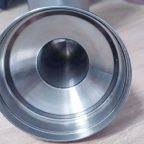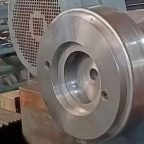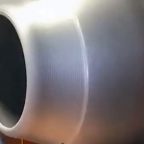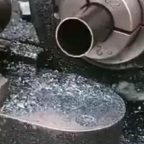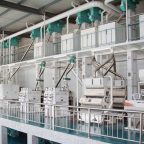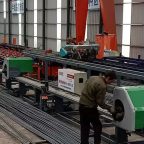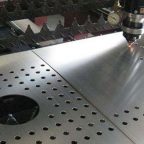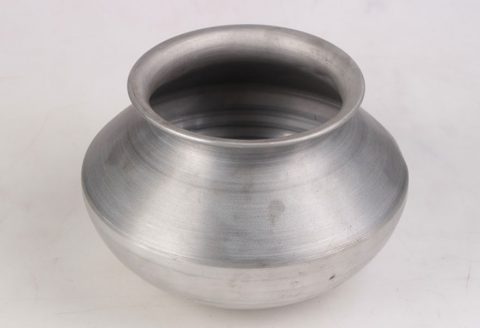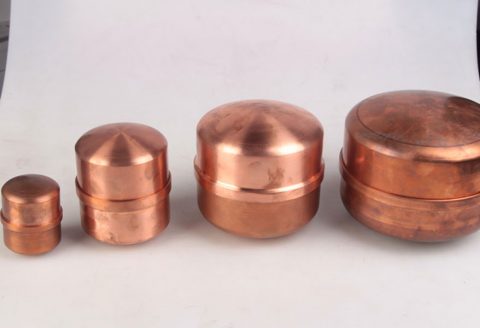
Pressure vessels are critical components in numerous industrial, commercial, and scientific applications, designed to contain gases or liquids at pressures substantially different from the ambient environment. These vessels are integral to processes in industries such as petrochemical, pharmaceutical, nuclear, and aerospace engineering. The safety, efficiency, and longevity of pressure vessels are heavily influenced by their geometric design, material selection, and operational conditions. Among these factors, the shape of a pressure vessel plays a pivotal role in determining its ability to withstand internal pressures, resist external forces, and ensure operational safety. This article explores the significance of pressure vessel shape in ensuring safety under pressure, delving into the engineering principles, material considerations, and practical applications that govern their design. Through a detailed examination of various shapes, their mechanical properties, and comparative analyses, this comprehensive discussion underscores why shape matters in the context of pressure vessel safety.
Introduction to Pressure Vessels
A pressure vessel is a container engineered to hold gases or liquids at a pressure significantly different from the surrounding atmosphere. These vessels are employed in a wide range of applications, from storing compressed natural gas in vehicles to containing reactor coolants in nuclear power plants. The primary challenge in pressure vessel design is ensuring structural integrity under high internal pressures, which can lead to catastrophic failure if not properly managed. Failures in pressure vessels, such as explosions or leaks, can result in severe economic losses, environmental damage, and loss of life. Consequently, the design of pressure vessels is governed by stringent codes and standards, such as the ASME Boiler and Pressure Vessel Code in the United States and the Pressure Equipment Directive in the European Union.
The shape of a pressure vessel is a fundamental aspect of its design, influencing its ability to distribute stresses, resist deformation, and maintain stability under pressure. Common shapes include cylindrical, spherical, conical, and toroidal vessels, each with distinct advantages and limitations. The choice of shape is driven by factors such as the intended application, operational pressure, material properties, and manufacturing constraints. This article examines the mechanical and practical implications of these shapes, providing a detailed analysis of how geometry affects safety and performance.
Fundamental Principles of Pressure Vessel Design
Mechanics of Pressure Vessels
The primary function of a pressure vessel is to contain internal pressure without undergoing excessive deformation or failure. The internal pressure exerts forces on the vessel walls, generating stresses that must be carefully managed. The two primary types of stresses in pressure vessels are hoop stress (circumferential stress) and longitudinal stress (axial stress). Hoop stress acts perpendicular to the vessel’s axis, tending to expand the vessel radially, while longitudinal stress acts along the vessel’s axis, tending to elongate it.
For a thin-walled cylindrical pressure vessel, the hoop stress ((\sigma_h)) and longitudinal stress ((\sigma_l)) can be approximated using the following equations:
[ \sigma_h = \frac{P \cdot r}{t} ]
[ \sigma_l = \frac{P \cdot r}{2t} ]
Where:
- (P) is the internal pressure,
- (r) is the radius of the vessel,
- (t) is the wall thickness.
These equations reveal that hoop stress is twice as large as longitudinal stress, making it the dominant factor in cylindrical vessel design. For spherical vessels, the stress distribution is more uniform, and the stress ((\sigma_s)) is given by:
[ \sigma_s = \frac{P \cdot r}{2t} ]
This equation indicates that, for the same radius and wall thickness, a spherical vessel experiences half the stress of a cylindrical vessel in the hoop direction, highlighting the mechanical advantage of spherical shapes.
Material Considerations
The choice of material for a pressure vessel is critical to its safety and performance. Common materials include carbon steel, stainless steel, aluminum, and composite materials, each selected based on factors such as strength, corrosion resistance, and cost. The material must have sufficient yield strength to withstand the stresses induced by internal pressure and toughness to resist brittle fracture, particularly in low-temperature environments.
Material selection is also influenced by the vessel’s shape. For example, spherical vessels, which experience lower stresses, may allow the use of thinner walls or less expensive materials compared to cylindrical vessels. However, the fabrication of spherical vessels is often more complex, which may offset these savings. Additionally, materials must be compatible with the contained substance to prevent corrosion or chemical reactions that could weaken the vessel.
Design Codes and Standards
Pressure vessel design is governed by international standards that specify requirements for materials, design, fabrication, inspection, and testing. The ASME Boiler and Pressure Vessel Code (BPVC) Section VIII is one of the most widely used standards, providing rules for the design of pressure vessels operating at pressures above 15 psig. Other standards include the EN 13445 in Europe and the ISO 16528 for international applications. These codes ensure that pressure vessels are designed with adequate safety margins, typically requiring the vessel to withstand pressures several times higher than the maximum operating pressure.
Common Pressure Vessel Shapes
The shape of a pressure vessel significantly affects its stress distribution, structural stability, and manufacturing feasibility. The following sections explore the most common shapes used in pressure vessel design, analyzing their mechanical properties, advantages, and limitations.
Cylindrical Pressure Vessels
Cylindrical pressure vessels are the most common type due to their simplicity, ease of fabrication, and versatility. A cylindrical vessel consists of a cylindrical shell with end closures, typically hemispherical, ellipsoidal, or flat heads. The cylindrical shape is well-suited for applications requiring large volumes, such as storage tanks, pipelines, and reactor vessels.
Mechanical Properties
As noted earlier, cylindrical vessels experience higher hoop stress than longitudinal stress, necessitating thicker walls or stronger materials to prevent failure. The stress concentration at the junctions between the cylindrical shell and end closures is a critical design consideration, often requiring reinforcement or specialized head designs. The choice of end closure affects the overall stress distribution and structural integrity.
Advantages
- Ease of Fabrication: Cylindrical shells can be manufactured by rolling flat plates into tubes and welding the seams, a relatively straightforward and cost-effective process.
- Space Efficiency: The cylindrical shape is well-suited for fitting into confined spaces, such as pipelines or vehicle-mounted tanks.
- Scalability: Cylindrical vessels can be easily scaled to accommodate large volumes by increasing the length or diameter.
Limitations
- High Stress Concentrations: The hoop stress in cylindrical vessels is twice that of spherical vessels, requiring thicker walls or stronger materials.
- End Closure Complexity: The design and attachment of end closures can introduce stress concentrations and increase fabrication costs.
- Pressure Limitations: Cylindrical vessels are less efficient at containing extremely high pressures compared to spherical vessels.
Spherical Pressure Vessels
Spherical pressure vessels are used in applications where minimizing stress and maximizing strength are critical, such as high-pressure gas storage or nuclear reactor components. The spherical shape distributes internal pressure uniformly across the vessel’s surface, resulting in lower stresses compared to cylindrical vessels.
Mechanical Properties
The uniform stress distribution in spherical vessels, as described by the stress equation (\sigma_s = \frac{P \cdot r}{2t}), makes them highly efficient for containing high pressures. The absence of sharp corners or discontinuities reduces stress concentrations, enhancing structural integrity. However, spherical vessels are less common than cylindrical vessels due to their complex fabrication requirements.
Advantages
- Lower Stress: The uniform stress distribution allows spherical vessels to use thinner walls or less expensive materials for the same pressure rating.
- High Pressure Capacity: Spherical vessels are ideal for applications requiring extremely high pressures, such as compressed gas storage.
- Stability: The spherical shape provides inherent structural stability, reducing the risk of buckling under external forces.
Limitations
- Complex Fabrication: Manufacturing spherical vessels requires specialized techniques, such as forming and welding spherical segments, which are more costly and time-consuming than cylindrical fabrication.
- Space Inefficiency: Spherical vessels are less efficient in terms of space utilization, making them impractical for applications requiring long, narrow containers.
- Limited Applications: The high cost and complexity of spherical vessels limit their use to specialized applications.
Conical Pressure Vessels
Conical pressure vessels, or vessels with conical sections, are used in applications where a transition in diameter is required, such as in chemical reactors or cyclone separators. The conical shape allows for gradual changes in cross-sectional area, which can be advantageous in managing flow or pressure gradients.
Mechanical Properties
The stress distribution in conical vessels is more complex than in cylindrical or spherical vessels due to the varying diameter. The hoop stress in a conical section increases as the diameter increases, requiring careful design to prevent failure. Conical vessels often require thicker walls or reinforcement at the larger-diameter end to manage these stresses.
Advantages
- Flow Management: The conical shape is effective for directing fluid flow or separating phases in processes like filtration or sedimentation.
- Versatility: Conical sections can be integrated with cylindrical or spherical vessels to create hybrid designs tailored to specific applications.
- Compact Transitions: Conical vessels allow for smooth transitions between different diameters, reducing turbulence and stress concentrations.
Limitations
- Complex Stress Distribution: The varying diameter leads to non-uniform stress distribution, complicating design and analysis.
- Fabrication Challenges: Conical sections are more difficult to fabricate than cylindrical or spherical sections, increasing costs.
- Limited Use: Conical vessels are typically used as components of larger systems rather than standalone vessels.
Toroidal Pressure Vessels
Toroidal pressure vessels, shaped like a doughnut or ring, are less common but offer unique advantages in specific applications, such as aerospace or high-pressure gas storage. The toroidal shape combines aspects of cylindrical and spherical geometries, providing a balance between stress distribution and space efficiency.
Mechanical Properties
The stress distribution in toroidal vessels is influenced by the curvature of the torus, which varies between the inner and outer radii. The hoop stress is generally lower than in cylindrical vessels but higher than in spherical vessels. The toroidal shape is particularly effective for applications requiring compact, high-pressure storage.
Advantages
- Compact Design: The toroidal shape allows for high-pressure storage in a compact footprint, making it suitable for aerospace or automotive applications.
- Balanced Stress: The toroidal geometry provides a compromise between the high stresses of cylindrical vessels and the uniform stresses of spherical vessels.
- Aesthetic Appeal: In some applications, the toroidal shape is chosen for its unique aesthetic qualities.
Limitations
- Complex Fabrication: Manufacturing toroidal vessels requires advanced forming and welding techniques, increasing costs.
- Limited Applications: The toroidal shape is typically used in niche applications where space constraints and pressure requirements justify the added complexity.
- Stress Concentrations: The varying curvature can lead to localized stress concentrations, requiring careful design.
Comparative Analysis of Pressure Vessel Shapes
To provide a clearer understanding of the differences between pressure vessel shapes, the following table compares their key characteristics:
| Shape | Stress Distribution | Fabrication Complexity | Space Efficiency | Pressure Capacity | Common Applications |
|---|---|---|---|---|---|
| Cylindrical | High hoop stress, moderate longitudinal stress | Low (simple rolling and welding) | High (fits confined spaces) | Moderate | Storage tanks, pipelines, reactors |
| Spherical | Uniform, low stress | High (complex forming and welding) | Low (bulky) | High | High-pressure gas storage, nuclear reactors |
| Conical | Non-uniform, varies with diameter | Moderate (requires precise forming) | Moderate (transitional) | Moderate | Chemical reactors, cyclone separators |
| Toroidal | Balanced, varies with curvature | High (advanced forming techniques) | High (compact) | High | Aerospace, automotive gas storage |
This table highlights the trade-offs between different shapes, with cylindrical vessels offering simplicity and versatility, spherical vessels excelling in high-pressure applications, conical vessels providing transitional functionality, and toroidal vessels balancing compactness and strength.
Safety Considerations in Pressure Vessel Design
Stress Analysis and Failure Modes
Ensuring the safety of a pressure vessel requires a thorough understanding of potential failure modes, including yielding, buckling, fatigue, and creep. Yielding occurs when the material exceeds its yield strength, leading to permanent deformation. Buckling is a concern for thin-walled vessels under external pressure or compressive loads. Fatigue failure results from cyclic loading, while creep occurs in high-temperature environments where materials deform over time.
Finite element analysis (FEA) is commonly used to model stress distributions and predict failure modes in complex vessel geometries. By simulating the effects of internal pressure, external forces, and thermal gradients, FEA allows engineers to optimize designs and identify potential weaknesses.
Safety Factors and Design Margins
Safety factors are incorporated into pressure vessel design to account for uncertainties in material properties, fabrication quality, and operating conditions. The ASME BPVC, for example, requires a minimum safety factor of 3.5 on the ultimate tensile strength for most materials, meaning the vessel must withstand 3.5 times the maximum allowable pressure without failure. Higher safety factors may be applied in critical applications, such as nuclear reactors.
Inspection and Testing
Regular inspection and testing are essential to ensure the ongoing safety of pressure vessels. Non-destructive testing (NDT) methods, such as ultrasonic testing, radiographic testing, and magnetic particle inspection, are used to detect defects or cracks in the vessel walls. Hydrostatic testing, where the vessel is filled with water and pressurized to 1.5 times the maximum allowable pressure, is a standard method for verifying structural integrity.
Corrosion and Environmental Factors
Corrosion is a major concern for pressure vessels, particularly those containing aggressive chemicals or operating in harsh environments. Corrosion can weaken the vessel walls, reducing the effective wall thickness and increasing the risk of failure. Protective coatings, cathodic protection, and corrosion-resistant materials, such as stainless steel or titanium, are used to mitigate these risks.
Practical Applications of Pressure Vessel Shapes
Petrochemical Industry
In the petrochemical industry, cylindrical pressure vessels are widely used for storing and processing hydrocarbons, such as crude oil, natural gas, and refined products. These vessels are often designed to handle moderate pressures and large volumes, making the cylindrical shape ideal due to its ease of fabrication and space efficiency. Spherical vessels are used for high-pressure storage of gases, such as propane or butane, where minimizing stress is critical.
Nuclear Industry
Nuclear reactors rely on pressure vessels to contain reactor coolants under high pressure and temperature. Spherical vessels are often preferred for their ability to withstand extreme pressures and uniform stress distribution. For example, the reactor pressure vessel in a pressurized water reactor (PWR) is typically a thick-walled cylindrical vessel with hemispherical end caps to balance stress and fabrication considerations.
Aerospace and Automotive Industries
In aerospace and automotive applications, weight and space constraints are critical. Toroidal pressure vessels are used in some spacecraft and high-performance vehicles to store compressed gases, such as hydrogen for fuel cells, in a compact and lightweight form. Cylindrical vessels are also common in automotive applications, such as compressed natural gas (CNG) tanks, due to their ease of integration into vehicle designs.
Pharmaceutical and Food Processing
The pharmaceutical and food processing industries use pressure vessels for processes such as sterilization, fermentation, and chemical synthesis. Cylindrical vessels with conical sections are often employed to facilitate flow and separation processes, while stainless steel is the preferred material due to its corrosion resistance and ease of cleaning.
Advanced Design Considerations
Composite Materials
The use of composite materials, such as carbon fiber-reinforced polymers, is increasingly common in pressure vessel design, particularly in aerospace and automotive applications. Composites offer high strength-to-weight ratios, allowing for lighter vessels without compromising safety. However, the anisotropic nature of composites requires specialized design and analysis techniques to account for varying mechanical properties in different directions.
Hybrid Shapes
Hybrid pressure vessels, combining elements of cylindrical, spherical, and conical shapes, are used in complex applications where multiple design requirements must be met. For example, a vessel with a cylindrical body, conical transition, and hemispherical end caps can provide a balance of volume, flow management, and stress distribution.
Thermal Effects
In high-temperature applications, such as steam boilers or chemical reactors, thermal expansion and thermal stresses must be considered. The choice of shape can influence thermal performance, with spherical vessels offering better resistance to thermal gradients due to their uniform geometry. Materials with high thermal conductivity and low coefficients of thermal expansion are preferred in these environments.
Case Studies
The Bhopal Disaster
The 1984 Bhopal disaster, one of the worst industrial accidents in history, involved the failure of a pressure vessel containing methyl isocyanate (MIC). The cylindrical vessel, operated by Union Carbide, experienced a runaway chemical reaction, leading to a massive release of toxic gas. This tragedy underscores the importance of proper design, maintenance, and safety systems in pressure vessels, particularly in chemical processing.
SpaceX Starship Fuel Tanks
SpaceX’s Starship, designed for interplanetary travel, uses cylindrical pressure vessels with hemispherical end caps to store liquid oxygen and methane propellants. The cylindrical shape balances volume requirements with structural efficiency, while advanced materials, such as stainless steel, ensure durability under extreme conditions. The design highlights the importance of shape in meeting the unique demands of aerospace applications.
Future Trends in Pressure Vessel Design
Additive Manufacturing
Additive manufacturing, or 3D printing, is revolutionizing pressure vessel design by enabling the creation of complex geometries that were previously impractical. For example, lattice structures can be incorporated into vessel walls to reduce weight while maintaining strength. These advancements may lead to new shapes and hybrid designs tailored to specific applications.
Smart Materials and Sensors
The integration of smart materials and sensors into pressure vessels allows for real-time monitoring of stress, temperature, and corrosion. These technologies can enhance safety by providing early warnings of potential failures, enabling predictive maintenance and reducing downtime.
Sustainability
As industries strive to reduce their environmental impact, pressure vessel design is evolving to incorporate sustainable materials and manufacturing processes. Recyclable materials, energy-efficient fabrication techniques, and designs that minimize material waste are becoming increasingly important.
Conclusion
The shape of a pressure vessel is a critical factor in ensuring safety, efficiency, and performance under pressure. Cylindrical, spherical, conical, and toroidal vessels each offer unique advantages and challenges, driven by their stress distributions, fabrication requirements, and practical applications. By understanding the mechanical principles, material considerations, and design standards that govern pressure vessel shape, engineers can optimize designs to meet the demands of diverse industries. Through rigorous analysis, adherence to safety standards, and ongoing innovation, the field of pressure vessel design continues to evolve, ensuring that these critical components remain safe and reliable in the face of ever-increasing pressures.
Maximize Tooling and CNC Metal Spinning Capabilities.
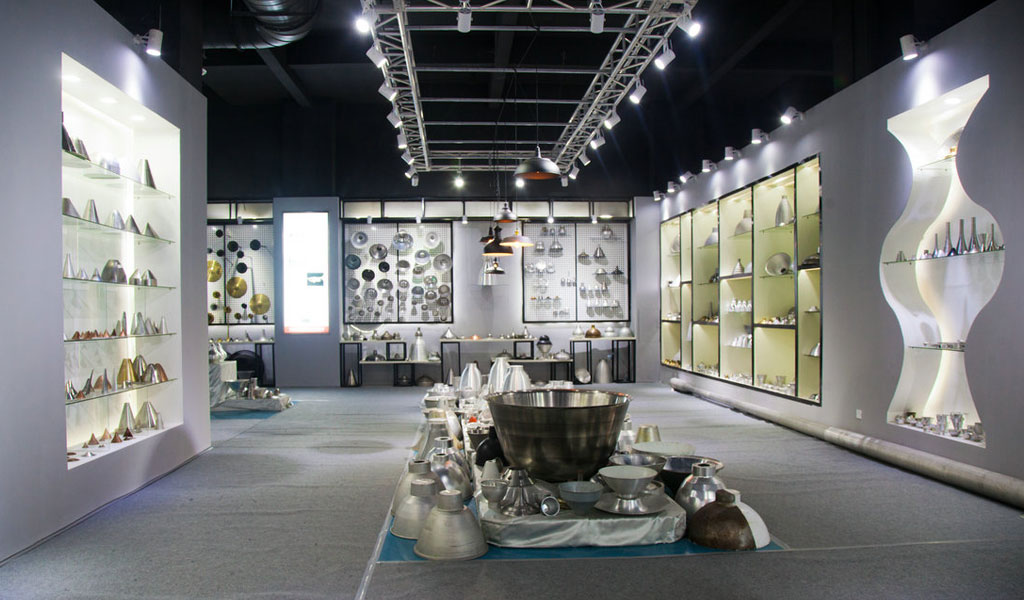
At BE-CU China Metal Spinning company, we make the most of our equipment while monitoring signs of excess wear and stress. In addition, we look into newer, modern equipment and invest in those that can support or increase our manufacturing capabilities. Our team is very mindful of our machines and tools, so we also routinely maintain them to ensure they don’t negatively impact your part’s quality and productivity.
Talk to us today about making a rapid prototype with our CNC metal spinning service. Get a direct quote by chatting with us here or request a free project review.
BE-CU China CNC Metal Spinning service include : CNC Metal Spinning,Metal Spinning Die,Laser Cutting, Tank Heads Spinning,Metal Hemispheres Spinning,Metal Cones Spinning,Metal Dish-Shaped Spinning,Metal Trumpet Spinning,Metal Venturi Spinning,Aluminum Spinning Products,Stainless Steel Spinning Products,Copper Spinning Products,Brass Spinning Products,Steel Spinning Product,Metal Spinnin LED Reflector,Metal Spinning Pressure Vessel,
